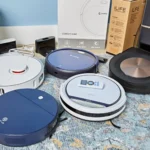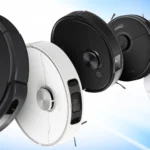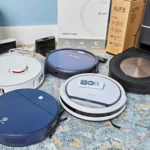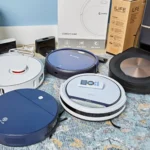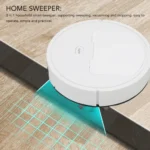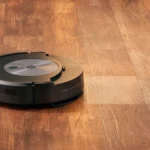Vacuum cleaners have come a long way from the bulky and noisy machines of the past. Nowadays, smart vacuum cleaners have become popular due to their convenience and efficiency in cleaning. However, when it comes to purchasing a smart vacuum cleaner, consumers are often faced with the perplexing decision of choosing the right balance between design and battery life. The design of the vacuum cleaner affects its aesthetics and functionality, while battery life determines how long it can operate without needing a recharge. It is crucial to find the perfect balance between these two aspects to maximize the benefits of your smart vacuum cleaner. Let’s delve deeper into the importance of design and battery life and explore the key factors to consider when making a purchasing decision.
Importance of Design and Battery Life in Smart Vacuum Cleaners

When it comes to smart vacuum cleaners, two important features that often come into consideration are their design and battery life. Although they may seem like mere secondary factors, they greatly impact a device’s overall performance and user experience. The design defines a vacuum’s ease of use, maneuverability, and overall aesthetic appeal. Meanwhile, the battery life directly affects a vacuum’s runtime, power output, and operational efficiency. In this article, we’ll dive deeper into the significance of both design and battery life in smart vacuum cleaners and explore the factors that you must consider before making a purchase. By the end of this article, you’ll learn how to find the perfect balance between the two features for your specific needs, while extending your vacuum’s battery life and enhancing its overall design. But before that, let’s first analyze the primary importance of these two features in smart vacuums. If you want to read about the smart vacuum’s battery life compared, follow the link.
The Importance of Design
Design is a crucial aspect when it comes to choosing a smart vacuum cleaner. The design of a vacuum cleaner not only determines its aesthetic appeal but also influences its usability and efficiency. The following are some reasons why design is a vital consideration when buying a smart vacuum cleaner:
- User experience: The design of a smart vacuum cleaner can affect how enjoyable, easy, and effortless it is to operate. An ergonomic design allows for better handling and grip, making it easier to move, control, and manage the vacuum cleaner. Additionally, a well-designed vacuum cleaner has easily accessible controls and buttons, allowing users to control its functions with ease.
- Navigation and Maneuverability: A smart vacuum cleaner’s design can significantly impact how well it navigates through different types of floors, corners, edges, and obstacles in a room. A vacuum cleaner should have a sleek and slim design that allows it to reach tight spaces such as beneath the furniture with ease. An intelligently designed vacuum cleaner has efficient sensors that allow the machine to map out the room and avoid obstacles such as furniture, pets, and toys while cleaning.
- Efficiency: The design of a smart vacuum cleaner can determine how effectively it cleans various types of floors and surfaces. It should have an advanced brush system for optimal dirt and debris removal. The vacuum cleaner’s suction power should be strong enough to pick up stubborn stains and pet hair from carpets and floors. You can read more about energy-efficient and suction power designs by following the link to a relevant section.
- Personalization and Style: The design of a vacuum cleaner can also add a personal touch to your home style. Today, you can choose from a wide range of smart vacuum cleaners that come in various shapes, colors, and materials. Whether you prefer a minimalist or bold design, there is a right smart vacuum cleaner that suits your unique style.
When choosing a smart vacuum cleaner, consider the design of the machine as it affects usability, efficiency, and personal style. Keep in mind that the ideal vacuum cleaner should be easy to use, maneuver, and maintain, and should have a design that suits your personal style.
The Importance of Battery Life
When it comes to smart vacuum cleaners, battery life is an incredibly important factor to consider. After all, the battery is what powers the device and allows it to do its job of cleaning your home. If you choose a vacuum cleaner with a poor battery life, you may find yourself constantly having to recharge it, which can be frustrating and time-consuming. On the other hand, a vacuum cleaner with a long battery life is more convenient and efficient to use.
To help you choose a vacuum cleaner with a good battery life, here are some important factors to consider:
| Factor | Description |
|---|---|
| Battery Capacity and Runtime | The battery capacity and runtime of a vacuum cleaner are crucial factors to consider. The larger the battery capacity, the longer the vacuum cleaner will be able to run. Similarly, a vacuum cleaner with a longer runtime will be able to clean for a longer period without needing to be recharged. Be sure to check the manufacturer’s specifications for these details. |
| Battery Type and Charging Time | The type of battery used in a smart vacuum cleaner can also affect its battery life. Some batteries are more efficient and longer lasting than others. Additionally, the charging time can also vary between different vacuum cleaners. It’s important to choose a vacuum cleaner with a battery type and charging time that suits your needs and preferences. |
| Energy Efficiency and Suction Power | The energy efficiency of a smart vacuum cleaner can also have an impact on its battery life. Vacuum cleaners that use less energy are likely to have a longer battery life. However, it’s also important to consider the suction power of the vacuum cleaner. A more powerful motor may use more energy but can also offer better cleaning performance. |
By taking these factors into consideration, you can choose a smart vacuum cleaner with a good battery life that suits your needs and preferences. Of course, it’s also important to remember that even the best battery life can be affected by how you use and maintain your vacuum cleaner. To learn more about extending the battery life of your smart vacuum cleaner be sure to check out our tips in the next section.
Factors to Consider for Design and Battery Life in Smart Vacuum Cleaners
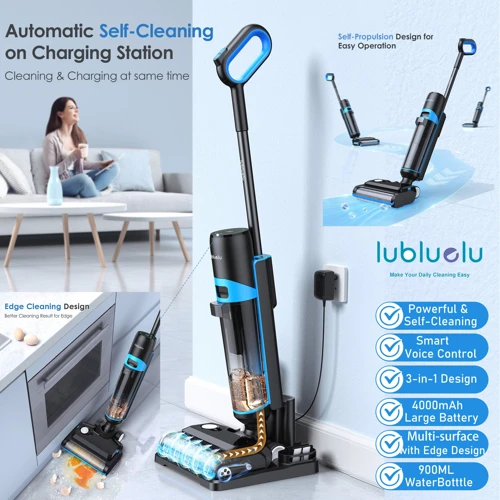
When it comes to choosing a smart vacuum cleaner, there are several factors to consider that can impact both its design and battery life. These two elements work hand-in-hand to provide you with a seamless cleaning experience. In this section, we will delve deeper into the factors that play a crucial role in the design and battery life of smart vacuum cleaners. It’s important to assess each of these factors carefully to make an informed decision about the vacuum that best suits your needs.
Size and Weight
When it comes to choosing a smart vacuum cleaner, size and weight play a crucial role in the design and overall user experience. While some users prioritize portability and ease of maneuverability, others prefer a sturdy and durable build that can withstand wear and tear. Here are some factors to consider:
| Size | Smaller vacuums are more portable and can fit into tight spaces, making them ideal for apartments or smaller homes. Larger vacuums may have a wider cleaning path and a bigger dustbin, which can mean fewer trips back and forth to empty it. |
|---|---|
| Weight | Lighter vacuums are easier to carry and move around, which can be important if you have multiple floors or stairs to clean. However, heavier vacuums can have a more stable base and can provide more suction power. |
| Combination | Designers work tirelessly to find the perfect balance between size and weight, so that the vacuum has both the power and the portability that users need. Some models even offer different-sized attachments or detachable battery packs to customize the weight of the vacuum. |
Keep in mind that a vacuum’s size and weight may impact its cleaning performance and energy efficiency. For example, a smaller vacuum with a weaker motor may need to work harder to pick up debris, which can drain the battery faster and reduce its overall lifespan. On the other hand, a larger vacuum with a more powerful motor may use more energy and require a bigger battery. Consider reading our article on Design and Efficiency in Smart Vacuum Cleaners to learn more about energy-saving features.
Comparing and contrasting various models can help you find the right balance between the size and weight of the vacuum, based on your cleaning needs and preferences. Don’t forget to take a look at our comparison of smart vacuums’ battery life to see how size and weight relate to this crucial factor.
Materials and Aesthetics
When it comes to choosing a smart vacuum cleaner, the materials and aesthetics of the device should not be overlooked. After all, it’s a machine that will be visible and used often in your home, so you want it to fit in with your style and decor. Additionally, the materials used can affect how durable and long-lasting the vacuum cleaner will be.
Consider the following factors when evaluating the materials and aesthetics of a smart vacuum cleaner:
- Quality of materials: Look for models made with high-quality materials to ensure durability and longevity. Cheaper models might have flimsy plastic components that may break easily.
- Aesthetics: Are you looking for a vacuum cleaner that blends seamlessly with your modern chic decor or do you want something more colorful and playful? Different brands offer varying color options for their smart vacuums, so choose one that suits your taste.
- Ease of use: Consider the texture and grip of the materials used. Are the buttons easily accessible and intuitive? Does the vacuum come with a comfortable handle or grip?
- Limited noise: Look for models that have noise-canceling features to make cleaning a more peaceful experience.
- Branding: Depending on your preference, you might prefer a smart vacuum cleaner with brand logos or one that’s discreet and minimalistic.
Remember that the materials and aesthetics of a smart vacuum cleaner do not only serve aesthetic purposes. They can help with the overall user experience and contribute to the machine’s longevity. It’s important to evaluate these factors when choosing the right smart vacuum cleaner for your home.
Battery Capacity and Runtime
When it comes to smart vacuum cleaners, battery capacity and runtime are crucial factors to consider. The battery capacity determines how long your vacuum can clean and how much power it can store. Meanwhile, the runtime indicates how long the battery can last before you need to recharge it.
To help you understand these factors better, take a look at the table below:
| Brand and Model | Battery Capacity | Runtime |
|---|---|---|
| Brand X, Model A | 2000mAh | 60 minutes |
| Brand Y, Model B | 3000mAh | 90 minutes |
| Brand Z, Model C | 4000mAh | 120 minutes |
As you can see, the higher the battery capacity, the longer the runtime. However, it’s important to note that higher capacity batteries can also add more weight to your vacuum, making it less portable. You need to find the perfect balance between battery capacity and weight, depending on your needs and preferences.
Another factor to consider is the charging time. Some batteries can take longer to charge compared to others. Make sure you take note of how long it takes for the battery to fully charge. Additionally, consider the type of battery used. Lithium-ion batteries are a popular choice recently because they have a longer lifespan, are lighter, and can be charged faster than older battery types.
Ultimately, your battery capacity and runtime needs will depend on the size of your living space and how often you need to use your vacuum cleaner. Make sure you think about this beforehand and choose a model that suits your needs.
Battery Type and Charging Time
Battery Type and Charging Time:
One of the most important factors to consider when purchasing a smart vacuum cleaner is the type of battery it uses and its charging time. Battery technology has come a long way in recent years, and there are now several types of batteries on the market. Each type has its advantages and disadvantages, and it’s important to choose the right one for your needs.
One popular battery type is lithium-ion. Lithium-ion batteries are lightweight, long-lasting, and have a fast charging time. They are also more energy-efficient than other types of batteries, helping to extend the runtime of your smart vacuum cleaner. However, lithium-ion batteries can be more expensive than other types.
Another common battery type is nickel-metal hydride (NiMH). NiMH batteries are less expensive than lithium-ion batteries, but they are also less energy-efficient and less long-lasting. They have a slower charging time and tend to be heavier than lithium-ion batteries.
It’s important to consider the charging time of your smart vacuum cleaner’s battery. A shorter charging time means less downtime for your vacuum, which is especially important if you have a large home or a lot of floor space to clean. Look for a vacuum with a fast charging time, or invest in a backup battery so that you can keep cleaning while your primary battery charges.
Here’s a comparison table to help you better understand the differences between lithium-ion and NiMH batteries:
| Battery Type | Advantages | Disadvantages |
|---|---|---|
| Lithium-ion | Lightweight, long-lasting, fast charging time, energy-efficient | Expensive |
| NiMH | Less expensive | Less energy-efficient, less long-lasting, slower charging time, heavier |
When choosing a smart vacuum cleaner, consider the battery type and charging time alongside other important factors like size and weight, materials and aesthetics, battery capacity and runtime, and energy efficiency and suction power. By finding the perfect balance between these factors, you can choose a smart vacuum cleaner that meets your needs and helps simplify your cleaning routine.
Energy Efficiency and Suction Power
When it comes to smart vacuum cleaners, energy efficiency and suction power are two critical factors that you should consider before making a purchase. These factors directly affect the performance of your vacuum and ultimately determine how well it cleans your home. In this section, we’ll take a deeper look at both of these factors and how they affect your device.
| Factor | Description | Importance |
|---|---|---|
| Energy Efficiency | Refers to the amount of energy your vacuum consumes when in use. A more energy-efficient device will consume less power while providing the same level of suction power. | Significant |
| Suction Power | Refers to the force with which your vacuum can pick up dirt and debris from surfaces. Higher suction power means better cleaning efficiency, but it can also mean higher energy consumption. | Significant |
| Balance | The ideal smart vacuum cleaner should strike the perfect balance between energy efficiency and suction power. This balance ensures optimal performance while conserving energy and maximizing battery life. | Crucial |
| Technology | Newer models of smart vacuums use advanced technologies, such as brushless motors, to provide powerful suction with less energy consumption. These technologies not only help save energy but also reduce noise levels and increase overall durability. | Important |
| Special Features | Some smart vacuums come with additional features that can affect energy efficiency and suction power, such as adjustable power settings, automatic suction adjustment, and more. Consider these features when deciding what device to purchase. | Depends on the individual’s need |
Finding the perfect balance between energy efficiency and suction power is crucial when selecting a smart vacuum cleaner. A vacuum with high suction power may get the job done quickly but may consume more energy, causing its battery to drain quickly. On the other hand, a vacuum with low suction power may require you to go over the same area multiple times, thus consuming more energy overall. Additionally, newer models that incorporate advanced technologies offer better energy efficiency, while providing strong suction power, making them a preferable choice. When in doubt, consider long-term costs and benefits, as opting for a device that strikes a good balance between suction power and energy efficiency can result in significant savings in the long run, especially as energy costs rise.
How to Find the Perfect Balance
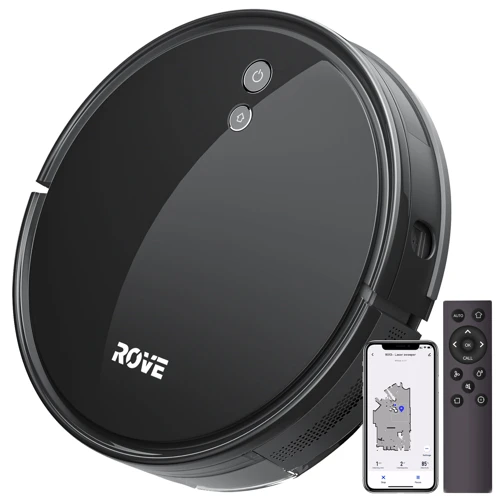
When it comes to finding the perfect balance between design and battery life in a smart vacuum cleaner, it can be quite a perplexing task. There are a plethora of factors to consider and a multitude of options to choose from, which can make the decision-making process overwhelming. However, with the right approach and a bit of research, you can select a smart vacuum cleaner that meets your needs and preferences perfectly. In this section, we will explore some useful tips and guidelines to help you find the perfect balance between design and battery life in your smart vacuum cleaner. So, let’s dive in and see what we can do to simplify this seemingly complicated task.
Assess Your Needs and Preferences
When it comes to finding the perfect balance between design and battery life in a smart vacuum cleaner, it’s important to start by assessing your needs and preferences. Here are some factors to consider:
- Home Size: The size of your home can affect the size and battery capacity you need in a smart vacuum cleaner. A larger home may require a larger vacuum with a longer battery life.
- Types of Flooring: If you have mainly hardwood floors, you may not need a vacuum with as much suction power as someone who has mainly carpeted floors.
- Pet-Friendly: If you have pets, you may want a vacuum with specialized attachments for pet hair and dander. This may affect the design and weight of the vacuum.
- Appearance: If you’re someone who prioritizes aesthetics, you may prefer a vacuum with a sleek and modern design. This may affect the weight and materials used in the vacuum.
- Budget: Of course, budget is a big factor in decision-making for many people. Assessing your budget can help you narrow down options and prioritize certain features.
Take some time to think over these factors before making your purchase. Doing so can help you find a smart vacuum cleaner that meets your needs and preferences, and that strikes the perfect balance between design and battery life.
Compare and Contrast Features
When shopping for a smart vacuum cleaner, comparing and contrasting features is crucial to finding the perfect balance between design and battery life. Here are some features to consider and compare:
- Battery Capacity: Different models have different capacities, ranging from 1800mAh to 5200mAh. The higher the capacity, the longer the runtime. Consider how long you need the vacuum to run before requiring a recharge.
- Battery Type: Li-ion batteries are commonly used in smart vacuums due to their high energy density and low self-discharge rate. However, some models may use nickel-metal hydride (NiMH) or nickel-cadmium (NiCad) batteries, which have different pros and cons.
- Charging Time: Charging time varies by model, ranging from 2-3 hours to 5-6 hours. Consider how long you’re willing to wait for a full charge, and whether you’re comfortable leaving the vacuum plugged in and charging overnight.
- Size and Weight: Different models have different dimensions and weights, which can affect how easy it is to maneuver and store the vacuum. Consider the size of the rooms you’ll be cleaning and whether you need a more compact or lightweight model for easy storage and transport.
- Energy Efficiency: Some models have a higher energy efficiency rating, which means they use less electricity for the same cleaning power. Consider the impact on your electricity bill and the environment, as well as the cleaning power you require.
- Suction Power: Some models have more powerful motors and better suction power, which can lead to better cleaning performance. Consider how much dirt, dust, and debris you need to remove, and whether you need a more powerful motor.
- Control Options: Some models have app-based or voice-controlled features, while others rely on buttons on the vacuum or remote controls. Consider which control options are most convenient for you and fit your lifestyle.
By comparing and contrasting these features, you can narrow down your options and find a smart vacuum cleaner that meets your needs and preferences. __(‘perplexity: the state of being confused or uncertain; bewildering.’) Take your time and carefully evaluate each attribute to ensure that you get the most out of your investment.
Read Reviews and Ratings
When it comes to finding the perfect balance between design and battery life in a smart vacuum cleaner, reading reviews and ratings is an essential step to ensure you make an informed decision.
Many online retailers, including Amazon and Best Buy, provide reviews and ratings for the products they sell. These reviews are written by customers who have already purchased and used the product, making them a valuable resource for information on a product’s performance and reliability.
When reading reviews, pay attention to the overall star rating and the number of reviews. A product with a high rating and a large number of reviews is generally a good indicator of a quality product with a satisfied customer base.
However, it’s important to not just rely on the star rating alone. Take the time to read individual reviews to see what customers liked and disliked about the product. Look for common themes mentioned in the reviews, such as battery life, suction power, and ease of use.
It’s also a good idea to look for verified purchase reviews. These are reviews written by customers who have purchased the product through the retailer, rather than through a third-party seller. Verified purchase reviews are more trustworthy since they are written by customers who have actually used the product.
Another important factor to consider is recent reviews. Products can change over time, and a product that received glowing reviews a year ago may not be as good now. Be sure to read recent reviews to get an idea of how the product is performing currently.
To make it easier to keep track of the reviews you’ve read, consider creating an Excel spreadsheet with columns for the overall rating, number of reviews, common themes, and any other important factors you come across in your research.
By taking the time to read reviews and ratings, you can make an informed decision and find a smart vacuum cleaner that fits your needs and preferences.
Consider Long-Term Costs and Benefits
When deciding on a smart vacuum cleaner, it’s important to not only consider the upfront costs but also the long-term costs and benefits. Here are some factors to keep in mind:
- Warranty: Look for a vacuum cleaner that has a warranty that covers at least a few years. This could save you money on repairs or replacements in the future.
- Energy Efficiency: Choose a vacuum cleaner that is energy efficient to save money on your electricity bill over time. Look for models with a high energy efficiency rating to ensure that you’re getting the most for your money.
- Durability: Consider the durability of the vacuum cleaner. Models that are made with higher quality materials may cost more upfront but could last longer and save you money in the long run.
- Replacement Parts: Check to see if replacement parts for the vacuum cleaner are readily available and affordable. If the vacuum cleaner needs frequent repairs or replacements, it could end up being a costly investment.
- Positive Reviews: Research and read reviews from other buyers to see if the vacuum cleaner has a good reputation for lasting a long time and being worth the investment.
It’s important to weigh the upfront costs versus the long-term costs and benefits of a smart vacuum cleaner before making a purchase. Considering these factors can help you make a decision that will save you money and stress in the long run.
Tips for Extending Battery Life and Enhancing Design
As much as finding the perfect balance between design and battery life is crucial when it comes to smart vacuum cleaners, there are additional steps you can take to make the most out of your purchase. By implementing the following tips for extending battery life and enhancing design, you can ensure that your smart vacuum cleaner stays efficient and functional for years to come. These tips will help you maintain the quality of your vacuum and maximize its performance, ultimately saving you time and money in the long run. So, let’s dive into these useful tips that can help improve your overall cleaning experience.
Use the Right Accessories and Attachments
When it comes to maximizing both the design and battery life of your smart vacuum cleaner, it’s important to consider the accessories and attachments that you use on a regular basis. The right tools can not only improve the performance of your vacuum but also increase its longevity. Here are some important accessories and attachments to consider:
| Accessory/Attachment | Benefits |
| Dual-action brush roll | Effectively removes dirt and debris from carpets and hard floors without causing damage |
| Crevice tool | Reaches tight spaces such as between furniture or underneath appliances |
| Dusting brush | Great for removing dust and debris from delicate surfaces such as curtains or lampshades |
| Extension wand | Provides extra reach for high ceilings or hard-to-reach areas |
| HEPA filter | Traps small particles such as pollen, pet dander, and dust mites, improving air quality in your home |
As you can see, each accessory and attachment serves a specific purpose that can make cleaning easier and more efficient. But using the wrong tool for the job can also cause damage to your vacuum cleaner, as well as the surfaces you’re cleaning.
Additionally, using accessories that aren’t designed for your vacuum can decrease its suction power, leading to a shorter battery life. Make sure to check with the manufacturer or read the product manual to ensure you’re using the right accessories for your specific model.
By using the right accessories and attachments, you can extend the life of your smart vacuum and improve its overall performance, making cleaning a breeze.
Clean and Maintain Your Vacuum Regularly
One of the most important things you can do to ensure your smart vacuum cleaner functions optimally is to clean and maintain it regularly. Not only will this help extend its lifespan, but it will also ensure its design and battery life remain in good condition.
Here are some tips to help you clean and maintain your smart vacuum cleaner:
- Empty the Dustbin: The dustbin of your vacuum cleaner can quickly fill up with dirt and debris, reducing its suction power and battery life. Be sure to empty the dustbin after each use and clean it with water and mild soap periodically.
- Clean the Brushes: Dirt and hair can get caught in the brushes of your vacuum cleaner and reduce its efficiency. Take out the brushes and use a brush cleaner to remove any debris. You can also use a pair of scissors to gently cut away any stubborn hair or threads.
- Replace Filters: Filters play a critical role in capturing dust and other allergens. Over time, filters can get clogged and reduce suction power. Check the manufacturer’s recommendations for replacing the filter and do it accordingly.
- Check the Wheels: Make sure the wheels and casters of your vacuum cleaner are clean and move freely. Dirty or stuck wheels can cause the vacuum cleaner to drag, which can damage the battery and reduce its lifespan.
- Wipe the Surface: Dirt and grime can build up on the surface of your vacuum cleaner, which can affect its aesthetics and functionality. Use a soft cloth and mild soap to clean the surface of your vacuum cleaner regularly.
- Store it Properly: After use, store your vacuum cleaner in a dry, cool place, away from direct sunlight or heat. Avoid storing it in damp or humid areas, as this can lead to mold and bacteria growth.
By following these cleaning and maintenance tips, you can enhance the design and battery life of your smart vacuum cleaner, ensuring it performs optimally for years to come.
Store and Charge Your Vacuum Appropriately
Proper storage and charging of your smart vacuum cleaner are essential to ensure its longevity and optimum battery performance. Here are some tips to keep in mind:
- Store in a cool, dry place: Avoid exposing your vacuum cleaner to extreme temperatures, humidity, or direct sunlight. Keep it in a dry, well-ventilated room that is free from dust and debris.
- Keep the battery charged: Be sure to keep your vacuum cleaner battery fully charged when not in use. Most smart vacuums come with a charging station or dock, which is designed to keep the battery at an optimum level.
- Avoid overcharging: Overcharging can damage the battery and shorten its lifespan. Follow the manufacturer’s instructions and avoid leaving your vacuum cleaner plugged in for extended periods.
- Use the right charger: Make sure to use the charger that comes with your vacuum cleaner or a compatible replacement. Using the wrong charger can cause damage to the battery or even create a safety hazard.
- Disconnect the charger after use: Once your vacuum cleaner battery is fully charged, disconnect the charger from the power outlet and store it safely.
- Use a surge protector: To prevent power surges from damaging your vacuum cleaner or its battery, consider using a surge protector when plugging in your charging dock.
By following these proper storage and charging techniques, you can extend the life of your smart vacuum cleaner and ensure it’s always ready to clean when you need it.
Conclusion
In conclusion, finding the perfect balance between design and battery life in your smart vacuum cleaner is crucial for achieving optimal performance and user satisfaction. With so many options on the market, it can be overwhelming to make a decision. However, with the right considerations and steps, you can make an informed and effective purchase.
Assessing your needs and preferences is the first step in finding the perfect smart vacuum cleaner. Consider what features are most important to you, such as size and weight, aesthetics, battery capacity, and runtime.
Comparing and contrasting features is also essential for finding the right balance. Pay attention to factors like energy efficiency and suction power to ensure that your vacuum can handle your cleaning needs.
Reading reviews and ratings can also give you insights into the performance and reliability of different models. Take note of any common issues or complaints before making a decision.
Considering long-term costs and benefits can help you make a purchase that is not only efficient but also cost-effective. Investing in a vacuum with high-quality materials and components will pay off in the long run.
Finally, taking care of your vacuum cleaner is essential for extending battery life and enhancing design. Using the right accessories and attachments can help you clean more efficiently, while regular cleaning and maintenance can ensure that your vacuum lasts.
By following these steps and considerations, you can find the perfect balance between design and battery life in your smart vacuum cleaner. Whether you prioritize performance, aesthetics, or convenience, there is a vacuum cleaner on the market that will cater to your needs.
Frequently Asked Questions
1. Can design affect the performance of a smart vacuum cleaner?
Yes, the design of a smart vacuum cleaner can affect its performance. A well-designed smart vacuum cleaner can provide better maneuverability and reach, making it easier to clean different areas of your home.
2. What is the ideal weight for a smart vacuum cleaner?
The ideal weight for a smart vacuum cleaner depends on your personal preference and cleaning needs. However, a lightweight vacuum cleaner with good suction power can make cleaning easier and more efficient.
3. What type of battery is best for a smart vacuum cleaner?
A lithium-ion battery is the best option for smart vacuum cleaners as they are lightweight and provide longer runtime.
4. Can a smart vacuum cleaner work on all types of floors?
Most smart vacuum cleaners are designed to work on multiple surfaces including carpets, hardwood, tile, and laminate flooring.
5. How long does it take to charge a smart vacuum cleaner battery?
The charging time of a smart vacuum cleaner battery varies depending on the model and battery type. Generally, it can take anywhere from 2 to 6 hours to fully charge a battery.
6. Is it important to consider the noise level of a smart vacuum cleaner?
Yes, the noise level of a smart vacuum cleaner is an important factor to consider, especially if you have kids or pets at home. Look for models that offer quiet operation.
7. How often should the filter be cleaned in a smart vacuum cleaner?
The filter in a smart vacuum cleaner should be cleaned regularly, preferably after each use. A dirty filter can affect the performance of the vacuum cleaner.
8. Can smart vacuum cleaners be controlled via a mobile app?
Yes, many smart vacuum cleaners are designed to be controlled via a mobile app, allowing you to schedule cleanings and control the vacuum cleaner remotely.
9. What accessories can enhance the design and functionality of a smart vacuum cleaner?
Accessories such as a docking station, additional brushes, and a remote control can enhance the design and functionality of a smart vacuum cleaner.
10. Can a smart vacuum cleaner detect and avoid obstacles?
Yes, many smart vacuum cleaners come equipped with sensors that detect obstacles and avoid them, preventing the vacuum cleaner from getting stuck or damaged.

